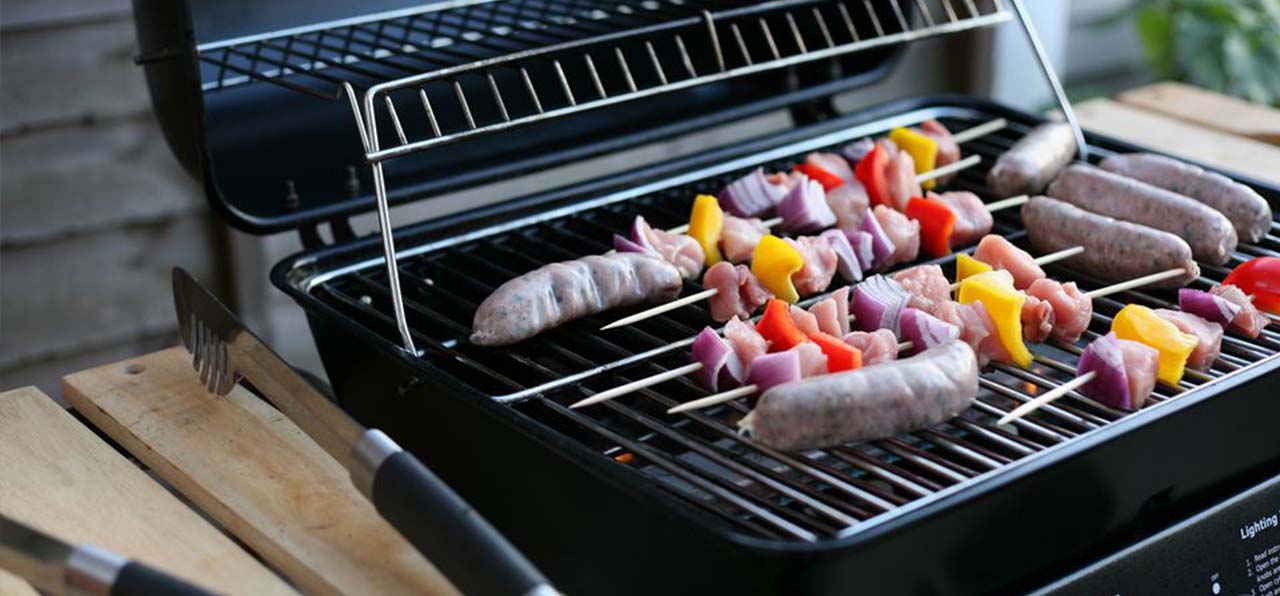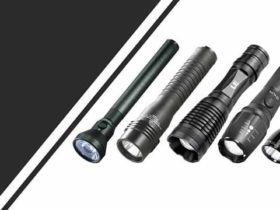So you’re planning to buy a grill? But the question is do you really think you get what you paid for dropping by a store or shop and practically choosing the one that catches your interest?
The thing with grills is that they are too many brands, types, varieties. Because of this, consumers and potential buyers are faced with the dilemma of which to choose among several types and price tags. Every salesman tries to convince you that their grill is the best option, but before you get too overwhelmed by the hype and too much advertisement, be sure to check out the essential factors to consider in buying different types of grills.

No other people in the world love grilling the most than Americans. From steaks, barbecue, to burger patties, a typical American household simply cannot afford to miss a grill.
They love to gather outdoors to have a weekend barbecue or perhaps go out camping and tailgating. Grills are the perfect outdoor mate for cooking. The flavor you get from any grilled food such as BBQ and steaks is incomparable, that’s why this kitchen equipment shouldn’t be absent in the kitchen.
When you’re planning to buy a grill, consider the following factors:
Price – The price is always the main factor to look into. For many consumers, the brand, specs, and features are second priorities. But the specific price tag of a grill largely depends on its type. For instance, charcoal grills are cheaper while electric and gas-powered varieties can range from $150 to $400. Your choice may depend on the price but remember that you ought to consider other factors as well.
Fuel Source – Grills are also classified based on the source of heat or flame. There are three primary sources – electric, charcoal, and gas. Each type has its own benefits and advantages. For instance, electric grills are mainly intended for indoor grilling. They need an electric outlet as a power source. Charcoal grill on the other hand is the oldest way of cooking food by way of the grill. The process is long and tedious since you need to make sure that the charcoal is burnt enough to radiate energy. The main advantage is that it can cook large batches of meat or any kind of food at the same time, thanks to a traditionally large grilling surface. Finally, there’s the gas grill, which utilizes either natural gas or propane for cooking food. It is the most preferred type simply because it allows faster and more convenient cooking.
Type of Material Used and Grill Surface – Finally, two important things to look at as well are the material used for making the grill and the characteristic of the grill surface. There are various things used to make them. Examples are cast iron, porcelain-coated steel, and chrome-plated steel or even stainless steel. Each material corresponds to a particular state of durability and price tag. For instance, chrome grills are the most inexpensive, cast iron meanwhile are the most ideal for heat distribution and even cooking, while porcelain-coated cast iron and stainless steel are the expensive ones.
How to Choose the Right BBQ Grill
Accordingly, grills are generally referred to as an outdoor cooking tool. However, there is actually another type used indoor, thus referred to as indoor grills. Based on performance and capability, both differ in so many ways.
Indoor grills are basically small tabletop electric grills. Obviously, the heat and cooking capacity of the indoor grill comes from electricity. There are two major varieties, the open grill and the contact grill. The former works in a way that the food is cooked from the bottom. It must be flipped before you can use it. The latter on the other hand is different because the lid cooks the top part of the food. The main purpose of the indoor grill is to let people enjoy the taste of grilled foods without really going out there and exposing themselves outdoors.
On the other hand, outdoor grills are still more popular than the indoor counterpart because they produce better grilling and cooking results. This type is usually called a barbecue grill as well. Unlike the first one, an outdoor grill is not exclusively electric powered. There other fuel sources such as charcoal, natural gas, and propane.
Types of Grills According to Fuel Source
When it comes to the fuel source, outdoor grills can be divided into three major types: electric, charcoal and gas.
- Electric Grills
Electric grills are mostly used indoors. People who prefer this type are those who don’t want to go outside and expose themselves to the weather. The most obvious advantage and benefits of the electric grill are that it cooks and heats faster than charcoal and gas. But what makes it unfit for some is the fact that it does not really produce the same cooking quality to that of the standard charcoal or propane gas grills.
- Charcoal Grills
Charcoal grills are the oldest forms of grills used today. In fact, charcoal has been around for so many years. When it is burned, it transforms into embers that in turn radiates heat. The heat produced is the catalyst for cooking food. Charcoal grills have different characteristics and designs. Some are square, round, and others are rectangular. There are also types that have lids and venting control. But one thing that makes charcoal grill impractical nowadays is that it needs lots of time and effort both in preparing and cleaning.
- Gas Grills
Gas fueled grills are the most preferred type these days. People use it for several reasons and the most obvious is that they are easier and cleaner to use, faster and more convenient, and best of all, they’re cheaper for the pocket. Gas grills can cook food in two ways – by heating it directly or through heating grates or any grilling tool that conducts and radiates heat. There are also different sizes which in turn are based on the grilling surface. But what separates gas grills from each other is the fuel source. Today, the most typical and popular are natural gas and propane. So what’s the difference between the two?
How to Grill with a Propane Gas Grill
When it comes to functionality and grilling performance, both sources are actually very similar. They both perform the same function when providing heat to the burner. There are gauges that regulate the flow of the gas so as to make sure you don’t get burned food. But when it comes to differences, there are many. For instance, natural gas grills aren’t really designed for portability. In order to utilize one, you need to make sure you get a constant supply of gas. This can be feasible is you’re living in a place where there is a local company that can supply the natural gas.
Propane gas grills on the other hand are specifically designed for portability. The gas source is a propane gas tank that can be purchased separately. Unlike a natural gas grill, you don’t need to settle for a permanent and stationary location. You can practically carry it wherever you go. Propane grills carry multiple types of bottled propane, ranging from the small 1 lb up to the standard 20 lbs.
Things to Like About Propane Gas Grills
Apparently, grill and barbecue enthusiasts love the propane gas grill for several reasons. Aside from being faster than a charcoal grill, it is also very easy to operate. While a natural gas grill is noticeably more practical if you hate running out of gas when you’re in the middle of cooking something, the best thing about propane grills is you can carry it with you since it is designed to be portable and handy.
No More Need for Briquettes
If you’re into grilling, you’re probably familiar with charcoal briquettes. What you usually do is purchase them separately and the put them to your grill. You need an accelerant like liquid butane to light them up. The most tedious task of charcoal grilling is you have to clean out the mess you made after cooking. With propane gas grills, no more need to purchase, prepare, and clean charcoal residues and waste after the grill.
How to Maintain a Propane Gas Grill
Thermostat and Temperature Control
Another thing to like about the propane grill is the temperature control feature. You will not see this feature from electric and charcoal grills. It allows you to have complete control of the heat in order to produce the best quality and best tasting food without burnt parts or sections.
Consistent and Identical Taste
The heating mechanism coming from propane gas is great because it cooks food quite evenly. It means that the flavor is kept intact. When the flavor is intact, you get to retain the nutrients. And most of all, you don’t get to eat carcinogens found in burnt food subjected to the charcoal grill.
How to Clean a Gas Grill
Some people are under the wrong assumption that a gas grill does not need as much cleaning as a charcoal grill as it burns cleaner. However, even the best gas grills will require good cleaning every now and then if you want to make them last longer. Thankfully, cleaning is quite simple and will probably take you just about 30 minutes of your time.
First of all, you want to use the clean setting on your grill to burn away all the grease and residue on your grates. Most gas grills will come with this setting. You are supposed to use it without cooking anything and with the lid down.
Make sure that you follow the owner’s manual when using this setting as you do not want to leave the clean setting for too long as it can burn off the paint. Once the clean function has burnt off the grease and residue, you will have to finish off the cleaning with the following manual steps.
- Remove the grates from the grill and use a store-bought grill cleaner to spray down the grates evenly. Allow the spray to soak in for about 5-10 minutes before you move on to the next step mentioned below.
- Use a wire brush to clean the grates. In most cases, your grill will come with a small cleaning kit that will include this wire brush. If not, you can purchase one for a really cheap price or even maybe use a hard bristle toothbrush.
- You will also need to remove the burner covers and clean the opening with the same wire brush. This will ensure that your burners work evenly which will in turn increase the fuel efficiency of the grill.
- Next, you will need to pull out the burners and scrape off the debris. Be careful not to apply too much pressure as you only want to scrape off the layer of debris that might be sticking on to it.
- Next, use a sharp toothpick to clean out the many burner holes that you will find in the gas grill. This will also ensure increased fuel efficiency and more efficient and even cooking.
- Lastly, you will also want to use a wet/dry vacuum to suck out all the debris on the floor of the grill. Skipping out on this step will mean that your barbeque taste will be compromised by debris that burns when you cook fresh food.
If you are looking to purchase new grills, make sure you read our in-depth gas grill reviews on the various brands and models.

























Leave a Reply
View Comments